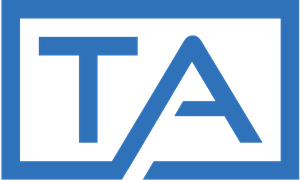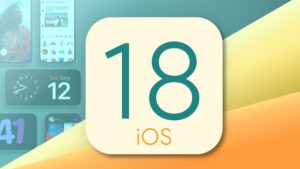In the fast-paced digital world remote work is growing. With its flexibility more people are choosing remote employment. Being productive from home may be easier with the correct tools. Fortunately, several productivity tools simplify workflow, improve communication and promote remote worker efficiency. Here are essential productivity applications for your home office
1. Task Management and Organization
Remote employment requires good task management and organization. Without an organized strategy the number of duties and deadlines might overwhelm you. Productivity applications like Todoist and Trello help.
Todoist lets users build extensive lists, set deadlines and arrange tasks by significance.
Remote professionals managing many projects will love its straightforward UI and cross platform flexibility.
Trello visual Kanban style boards let users arrange tasks into customized processes for real time collaboration and progress tracking.
2. Time Tracking and Productivity Analysis
Work life balance is essential while working remotely. With suitable monitoring tools it is easier to measure time efficiency. Remote workers use Toggl and RescueTime to track their productivity and improve. With a few clicks Toggl simple UI lets users measure time spent on activities and projects.
Data on productivity and time allocation are also available in detail. RescueTime automatically tracks program and website use in the background. It classifies tasks as productive, neutral or distracting, helping users make educated work habits and workflow choices.
3. Communication and Collaboration
Remote employment relies on good communication to collaborate and work together. Colleagues in distant places need dependable communication tools. Popular real time remote team communication software includes Slack and Zoom. Slack lets team members chat, share files and work on projects in dedicated channels.
Integration with other productivity tools and customizable notification settings keep crucial data safe. Zoom revolutionizes distant meetings with high quality video conferencing. Zoom’s simple design and powerful features make virtual communication seem like being in the same room whether in a one on one or big team conference.
4. Document Collaboration and File Management
Remote workers must collaborate on papers and maintain files well. Tools may improve processes and boost productivity whether coauthoring a report evaluating a presentation or exchanging project files. Dropbox and Google Workspace (previously G Suite) are essential document collaboration and file management tools.
Google Docs Sheets and Slides provide real time team communication in Google Workspace. Multiple users may edit the same document making it simple to monitor changes, make comments and stay in sync.
5. Focus and Concentration
Remote workers are distracted by social media and housework. They must stay focused to complete assignments. Luckily several productivity tools help users concentrate and avoid distractions. Forest is innovative gamification software that boosts productivity.
Users plant virtual trees that grow while they work to create a beautiful forest without interruptions. The app statistics and achievements help users remain on track.
6. Project Management and Workflow Automation
Remote teams need good project management to remain organized, meet deadlines and produce results. A powerful project management tool is essential for projects with various tasks deadlines and team members. Remote teams may automate project management and workflow using Asana and Monday.com
Asana has several tools to help teams plan, organize and monitor their work. Custom project boards and timelines let users create tasks, assign them to team members, specify due dates and view project timelines.
7. Health and Wellness
Remote employment allows for flexibility and lacks boundaries between work and home life. Therefore, remote workers must prioritize their health and wellbeing. Fortunately, many productivity tools promote physical and mental wellness enabling remote workers to stay healthy while reaching professional objectives.
MyFitnessPal is a fitness tracker and nutrition guide that lets users measure their daily activities, record meals and create fitness goals. By monitoring their calorie activity and dietary habits remote workers may make healthy choices and keep fit and energetic.
8. Language Learning and Skill Development
Staying competitive in today’s fast changing employment environment requires ongoing learning and skill improvement. Productivity tools may help remote workers learn, develop and learn. Popular language learning program
Duolingo provides interactive courses in over 30 languages making it easier for remote workers to learn a new language at their own speed, it makes language learning entertaining and productive whether you’re preparing for an overseas business trip widening cultural horizons or gratifying a personal interest. Apps like Coursera and Udemy provide online courses taught by industry specialists in programming data analysis, digital marketing and graphic design.
9. Financial Management and Budgeting
Remote workers must manage funds well to succeed financially. Due to erratic revenue and tax concerns an excellent financial management approach is essential for freelancers and remote workers. Several productivity tools simplify budgeting, cost tracking and financial management.
Mint is a popular personal finance program, integrates bank accounts, credit cards, investments and invoices into one screen. Set budgeting goals, monitor spending and get tailored financial advice. Tools like Expensify simplify expense reporting and reimbursement for remote workers with company expenditures. Users may easily log mileage, collect receipts and produce expense reports reducing time and administrative expenses.
The proactive budgeting tool YNAB You Need a Budget helps users assign every dollar to a task, prioritize financial objectives and manage their money. These financial management applications allow remote workers to make educated financial choices, save and achieve financial peace of mind in an unpredictable economy.
10. Virtual Networking and Professional Development
Networking and professional development are essential for remote workers to advance their careers and make relationships. Remote workers may use productivity applications to network and find new possibilities without attending conventional networking events.
LinkedIn lets users network with industry experts join relevant groups and demonstrate their skills and knowledge via their profiles. By talking to others and offering ideas remote workers may build relationships and learn about industry trends.
Meetup offers virtual networking and industry specific professional development programs. At a virtual conference mastermind group or skill building session remote professionals may network with likeminded people and receive professional insights.
Systems like Clubhouse enable spontaneous networking and knowledge sharing through audio-based chats and rooms. Remote workers may grow their professional network via virtual networking events and productivity tools to find new possibilities, partnerships and career progression in the digital age.
Conclusion
Remote workers have several productivity applications that boost efficiency collaboration and personal and professional development. These technologies help remote workers easily overcome problems, stay organized and accomplish objectives.
Productivity software is available for every need such as task management project collaboration and health and wellness. By embracing technology and creativity remote workers may improve their home office experience and flourish in the changing remote work world.



